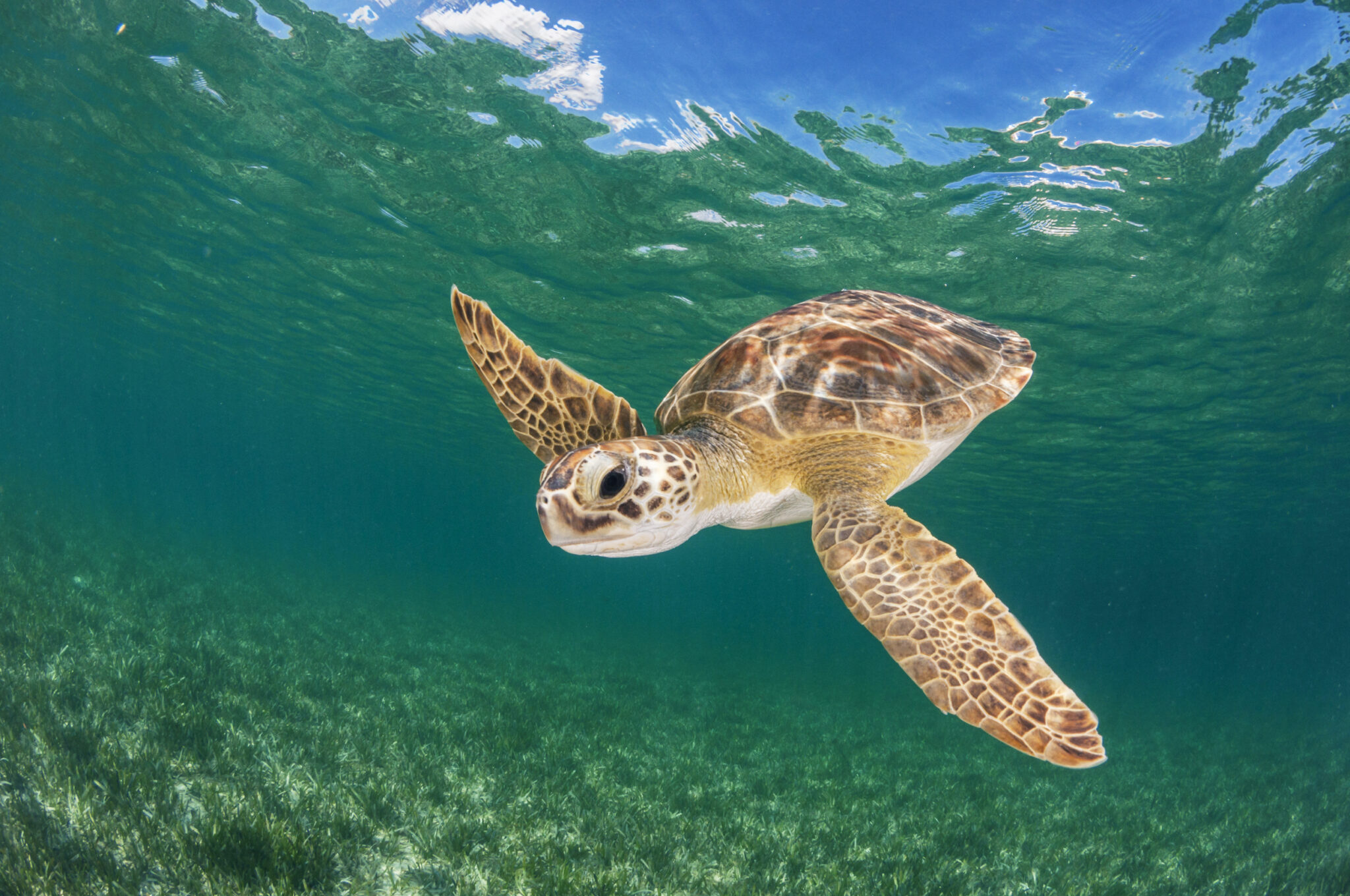Explore the World of Sea Turtle
Learn about their habitat, behavior, and unique traits.
About the Animal
Sea turtles represent a group of ancient marine reptiles, and most of the seven species are either Endangered or Critically Endangered. Populations have declined due to a variety of threats including habitat destruction, entanglement in fishing gear, poaching for their shells and eggs, pollution, and climate change. Rising sand temperatures caused by global warming also affect the sex ratio of hatchlings, as warmer sand tends to produce more females. Conservation efforts have increased globally and include beach protection, banning the trade of turtle products, and turtle-friendly fishing gear.
Habitat
Sea turtles are highly migratory animals, traveling thousands of miles across the world’s oceans. They inhabit coastal waters, coral reefs, open seas, and return to tropical and subtropical beaches to lay eggs. Different species have preferred nesting grounds; for instance, the leatherback often nests on Atlantic beaches, while the green turtle favors islands and atolls. Human development along coastlines, beach lighting, and erosion have significantly impacted nesting sites. Many conservation groups now work to protect these beaches, guide hatchlings to the sea, and monitor nesting success.
Diet
Sea turtles’ diets vary depending on their species and life stage. Green turtles are mostly herbivorous and graze on seagrasses and algae, helping maintain healthy marine ecosystems. Loggerheads prefer hard-shelled prey like crabs, conchs, and sea urchins, while leatherbacks feed almost exclusively on jellyfish. Their dietary preferences contribute to oceanic food web balance. However, ingestion of plastic waste, which resembles jellyfish, has become a serious threat to many sea turtle species, often leading to internal injuries and death.
Gallery

